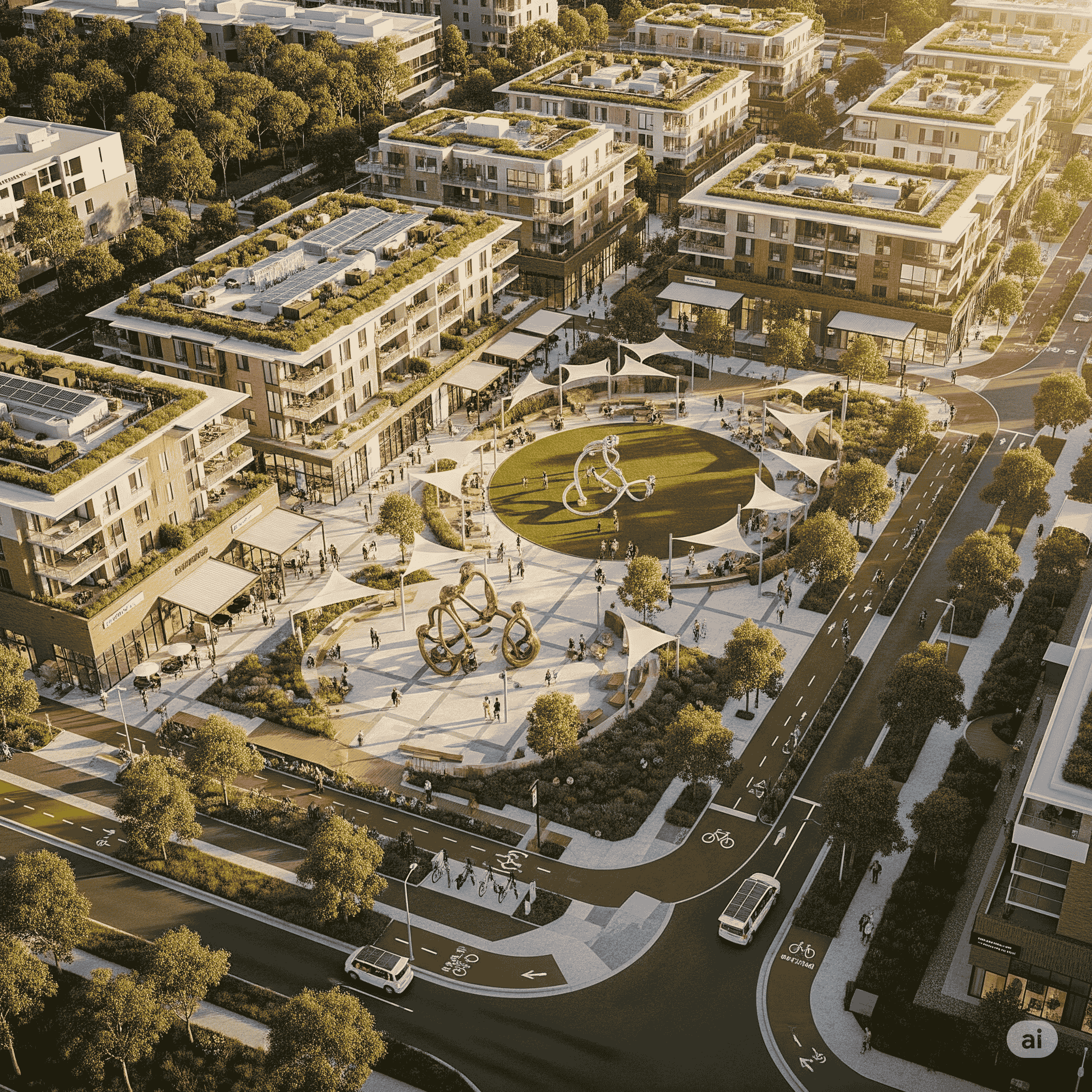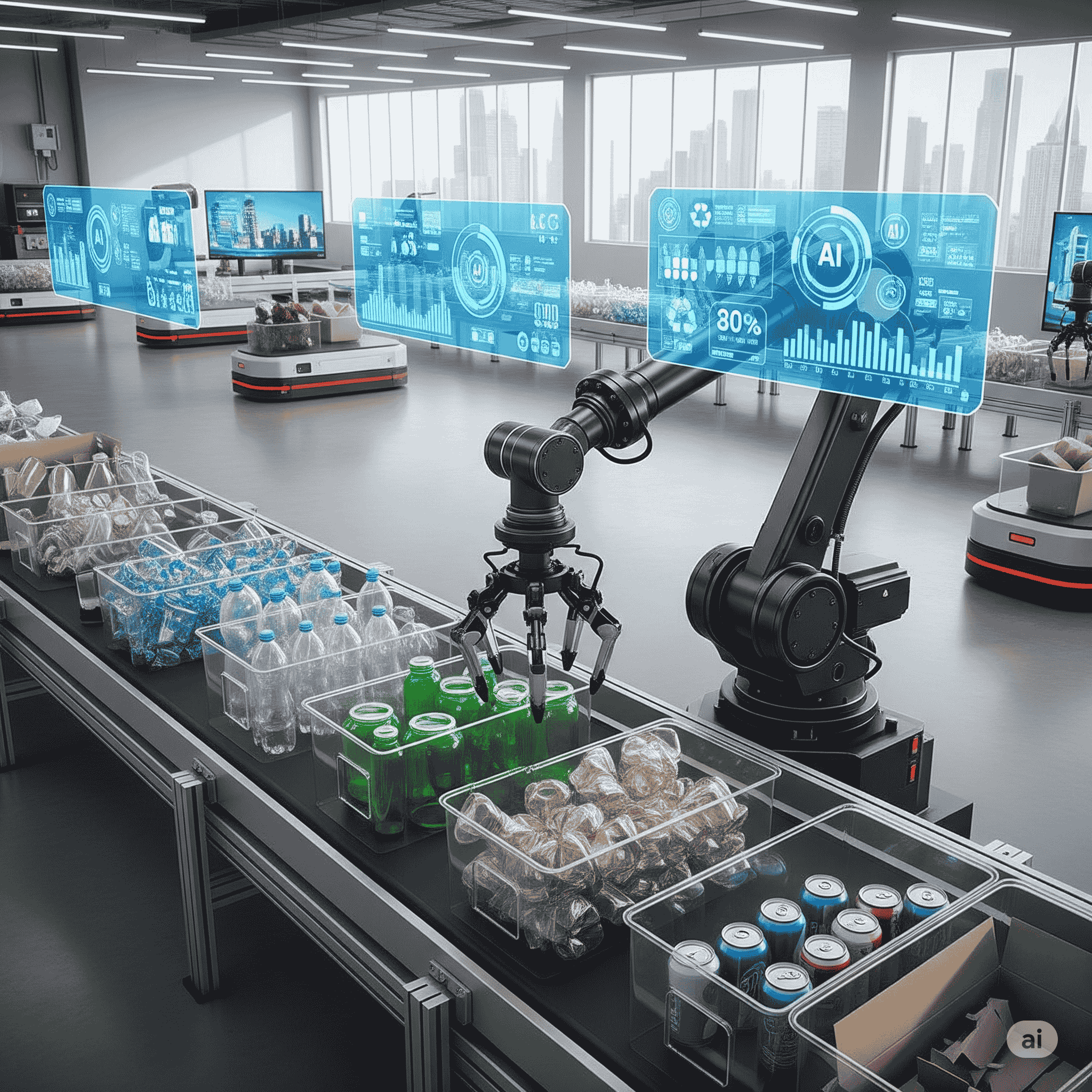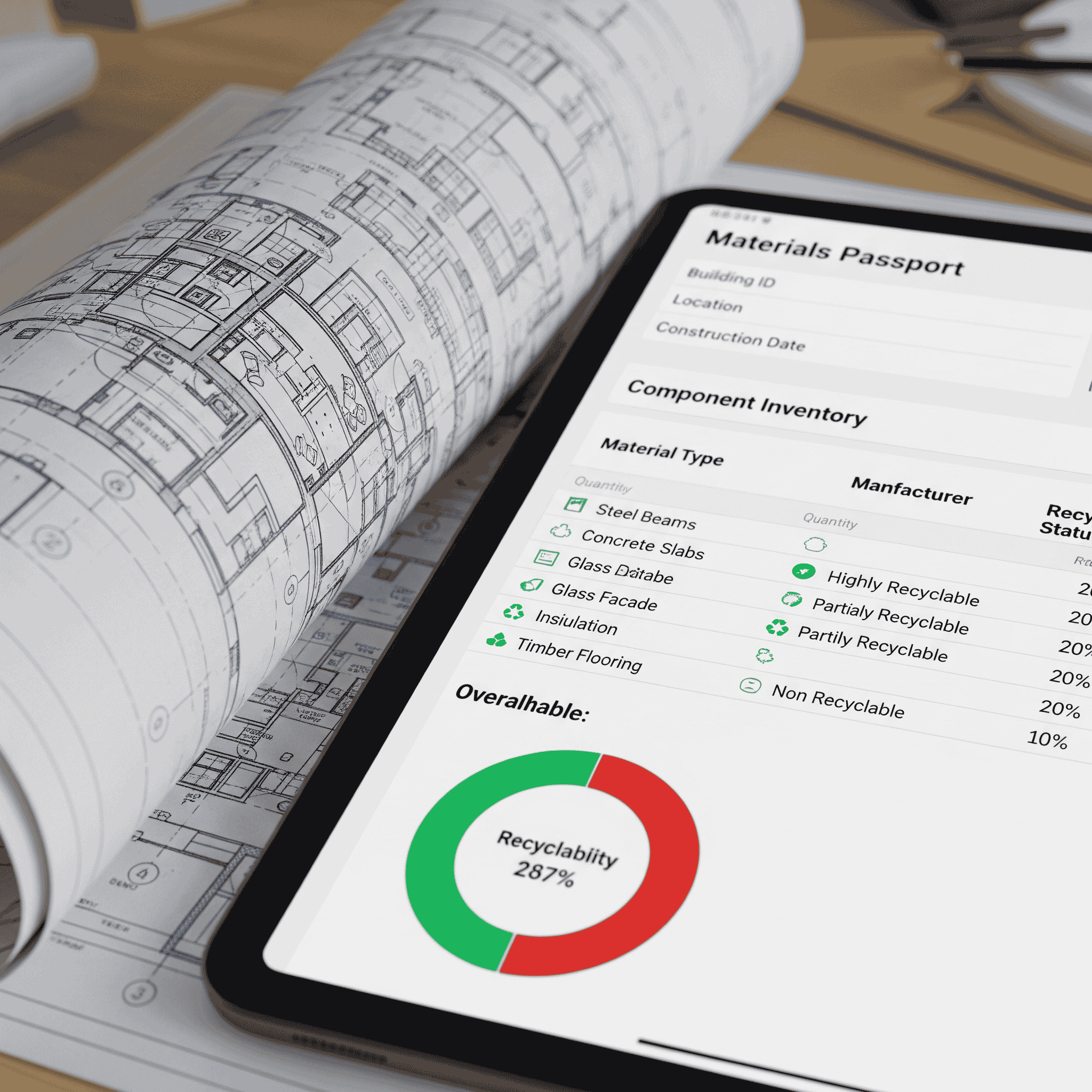
Urban Design Services That Meet Australian Green Building Standards
Discover how urban design services help meet Australian green building standards. Learn how Smart Planning and Design supports sustainable, compliant projects.
read more

For centuries, urban development has followed a linear "take, make, dispose" model. We extract raw materials, use them to build our cities, and then discard the waste, often at great environmental and economic cost. However, as populations grow and resources become scarcer, this model is no longer sustainable. Australia's urban landscape, in particular, faces unique pressures that demand a more innovative and resilient approach.
This is where the circular economy comes in—a systemic shift aimed at eliminating waste and the continual use of resources. It’s a philosophy that sees waste not as an end product, but as a valuable resource to be regenerated and reintegrated into the urban metabolism. The integration of this thinking is at the heart of modern Smart Planning Australia, creating a new blueprint for urban development that is regenerative by design.
Instead of building cities for a single lifecycle, we are now designing them to be self-sustaining ecosystems where materials, water, and energy flow in a continuous loop. This new paradigm promises to create cities that are not only more sustainable but also more economically robust and resilient to future shocks.
The transition to a circular city begins with strategic planning. Smart Planning Australia is about more than just zoning; it's about creating an urban fabric that facilitates resource efficiency from the ground up. Planners are now looking at innovative ways to co-locate businesses to create "industrial symbiosis," where one company's waste product becomes another's raw material.
Decentralised resource recovery hubs are also becoming a key feature of smart urban design. Instead of relying on a single, large landfill, these smaller, community-level facilities can sort, process, and reuse materials more efficiently. This approach not only reduces transport costs and emissions but also fosters local economies.
A crucial element of this planning is the design of flexible, mixed-use precincts that reduce the need for commuting and external resources. By integrating residential, commercial, and green spaces, smart planning minimises the carbon footprint and maximises efficiency. To explore this further, read our article on the foundational principles of a circular economy in urban planning and design.

The vision of a circular city is brought to life through Smart Design & Planning Australia. Architects and designers are reimagining buildings and infrastructure not as static objects, but as dynamic resource banks. This means adopting principles like "design for disassembly," where buildings are constructed with modular components that can be easily taken apart and reused at the end of their life.
Materials selection is also a critical consideration. Designers are increasingly choosing durable, high-quality materials that have a longer lifespan, or opting for recycled and regenerative materials to reduce the demand for virgin resources. For instance, using recycled timber for public benches or reclaimed brick for new buildings not only reduces waste but also adds character and a sense of history to a space.
Waste management is also being revolutionised through smart design. Instead of unsightly garbage collection points, designers are integrating aesthetically pleasing and highly efficient systems, such as underground pneumatic waste transport, that whisk waste away to be sorted and processed. This improves urban hygiene and frees up valuable street space. For more on this, explore how smart planning transforms waste into resources.

A circular economy cannot function at scale without the backbone of Smart City Australia technology. Sensors, data, and intelligent systems are the engines that make resource regeneration and waste reduction a reality.
IoT sensors in public and residential waste bins can monitor fill levels and trigger collection only when needed, dramatically optimising logistics and reducing the carbon footprint of waste collection vehicles. AI-powered sorting facilities can achieve levels of efficiency and accuracy that are impossible for human workers, ensuring a higher percentage of materials are successfully recycled or reused.
Digital platforms, using technologies like blockchain, can create a "materials passport" for buildings and products, tracking their components from production to reuse. This transparency enables a robust market for secondary materials, making it easier for designers and builders to source recycled content for their projects. By leveraging these tools, we can effectively rethink residential development to simultaneously address housing and waste management needs.
The marriage of smart technology with circular principles is a powerful combination that will enable Australia's cities to become more sustainable, resilient, and resource-rich for generations to come.

The shift to a circular economy is more than just a trend—it's a necessity for creating resilient, prosperous Australian cities. At Smart Planning & Design, we are at the forefront of this revolution, integrating circular principles into our innovative and data-driven projects. Our team of experts specialises in Smart Planning Australia and Smart Design & Planning Australia, helping clients navigate the complexities of sustainable development to create projects that are both environmentally responsible and economically viable.
Contact us today to discuss how we can help you turn your next project into a model of circular urban design.

Discover how urban design services help meet Australian green building standards. Learn how Smart Planning and Design supports sustainable, compliant projects.
read more

Discover the benefits of mixed-use developments in town planning Australia. Learn how they boost convenience, sustainability, and community connection.
read more

Discover why feasibility studies are essential in town planning Australia. Learn how they save time, reduce risks, and improve approval chances.
read more